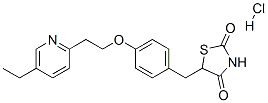Ertugliflozin
- CAS NO.:1210344-57-2
- Empirical Formula: C22H25ClO7
- Molecular Weight: 436.88
- MDL number: MFCD21609259
- SAFETY DATA SHEET (SDS)
- Update Date: 2024-12-12 15:32:36

What is Ertugliflozin?
Absorption
After administering single doses of 5 mg and 15 mg ertugliflozin under fasted conditions, the median Tmax was one hour. Plasma Cmax and AUC of ertugliflozin increase dose-proportionally. Following administration of a 15 mg dose, the Cmax was 268 ng/mL and the AUC was 1193 ng h/mL. The absolute oral bioavailability of ertugliflozin following administration of a 15 mg dose was approximately 100%, though it is reported to range from 70% to 90%.
Administration of ertugliflozin with a high-fat and high-calorie meal decreases ertugliflozin Cmax by 29%. It prolongs Tmax by one hour but does not alter AUC compared to the fasted state. The observed effect of food on ertugliflozin pharmacokinetics is not considered clinically relevant, and ertugliflozin may be administered with or without food.
Toxicity
The oral LD50 is 500 mg/kg in rats. There are limited clinical experiences of ertugliflozin overdose. It is recommended to initiate supportive measures in the event of drug overdosage. Removal of ertugliflozin by hemodialysis has not been studied.
The Uses of Ertugliflozin
Ertugliflozin is a sodium/glucose cotransporter 2 (SGLT2) inhibitor used to treat type 2 diabetes.
Background
Ertugliflozin is a sodium-dependent glucose cotransporter-2 (SGLT2) inhibitor used to treat type II diabetes mellitus. It works to block glucose reabsorption from the glomerulus.
Ertugliflozin was first approved by the FDA in December 2017. It was also approved by the European Commission in March 2018.
Indications
Ertugliflozin is indicated as an adjunct to diet and exercise to improve glycemic control in adult patients with type 2 diabetes mellitus (T2DM). It is also available in combination with either metformin or sitagliptin.
Ertugliflozin is not recommended for use to improve glycemic control in patients with type 1 diabetes mellitus.
Definition
ChEBI: Ertugliflozin is a diarylmethane.
Pharmacokinetics
Ertugliflozin causes a dose-dependent increase in urinary glucose excretion and an increase in urinary volume in patients with T2DM.
Metabolism
Ertugliflozin mainly undergoes O-glucuronidation mediated by UGT1A9 and UGT2B7 to form two pharmacologically inactive glucuronides. About 12% of the drug undergoes CYP-mediated oxidative metabolism. Several metabolites have been found in plasma, feces, and urine. In plasma, the unchanged form of ertugliflozin was found to be the major component of the administered dose.
Properties of Ertugliflozin
| Melting point: | 65 - 66oC |
| Boiling point: | 630.5±55.0 °C(Predicted) |
| Density | 1.455 |
| storage temp. | Sealed in dry,Store in freezer, under -20°C |
| solubility | DMSO (Slightly), Methanol (Slightly) |
| form | Solid |
| pka | 12.95±0.70(Predicted) |
| color | White to Off-White |
Safety information for Ertugliflozin
Computed Descriptors for Ertugliflozin
Ertugliflozin manufacturer
Honour Lab Limited
BDR Pharmaceuticals International Pvt Ltd
New Products
(S)-3-Aminobutanenitrile hydrochloride 4-Methylphenylacetic acid N-Boc-D-alaninol N-BOC-D/L-ALANINOL 3-Morpholino-1-(4-nitrophenyl)-5,6-dihydropyridin- 2(1H)-one Furan-2,5-Dicarboxylic Acid Tropic acid S-2-CHLORO PROPIONIC ACID ETHYL ISOCYANOACETATE 2-Bromo-1,3-Bis(Dimethylamino)Trimethinium Hexafluorophosphate 4-IODO BENZOIC ACID 3-NITRO-2-METHYL ANILINE 1-(2,4-DICHLOROPHENYL) ETHANAMINE 4-Bromopyrazole 5,6-Dimethoxyindanone Tert-butyl bis(2-chloroethyl)carbamate (2-Hydroxyphenyl)acetonitrile 2-(Cyanocyclohexyl)acetic acid 4-methoxy-3,5-dinitropyridine 1-(4-(aminomethyl)benzyl)urea hydrochloride 2-aminopropyl benzoate hydrochloride diethyl 2-(2-((tertbutoxycarbonyl)amino) ethyl)malonate tert-butyl 4- (ureidomethyl)benzylcarbamate Ethyl-2-chloro((4-methoxyphenyl)hydrazono)acetateRelated products of tetrahydrofuran
![D-Glucitol, 1,5-dideoxy-1,5-epithio-1-C-[5-[(4-ethoxyphenyl)Methyl]-2-Methoxy-4-Methylphenyl]-, (1S)-](https://img.chemicalbook.in/CAS/GIF/898537-18-3.gif)







You may like
-
 1210344-57-2 Ertugliflozin 98%View Details
1210344-57-2 Ertugliflozin 98%View Details
1210344-57-2 -
 1210344-57-2 98%View Details
1210344-57-2 98%View Details
1210344-57-2 -
 Ertugliflozin 98%View Details
Ertugliflozin 98%View Details
1210344-57-2 -
 Pf-04971729 95% CAS 1210344-57-2View Details
Pf-04971729 95% CAS 1210344-57-2View Details
1210344-57-2 -
 1975-50-4 98%View Details
1975-50-4 98%View Details
1975-50-4 -
 2-HYDROXY BENZYL ALCOHOL 98%View Details
2-HYDROXY BENZYL ALCOHOL 98%View Details
90-01-7 -
 14714-50-2 (2-Hydroxyphenyl)acetonitrile 98+View Details
14714-50-2 (2-Hydroxyphenyl)acetonitrile 98+View Details
14714-50-2 -
 118753-70-1 98+View Details
118753-70-1 98+View Details
118753-70-1